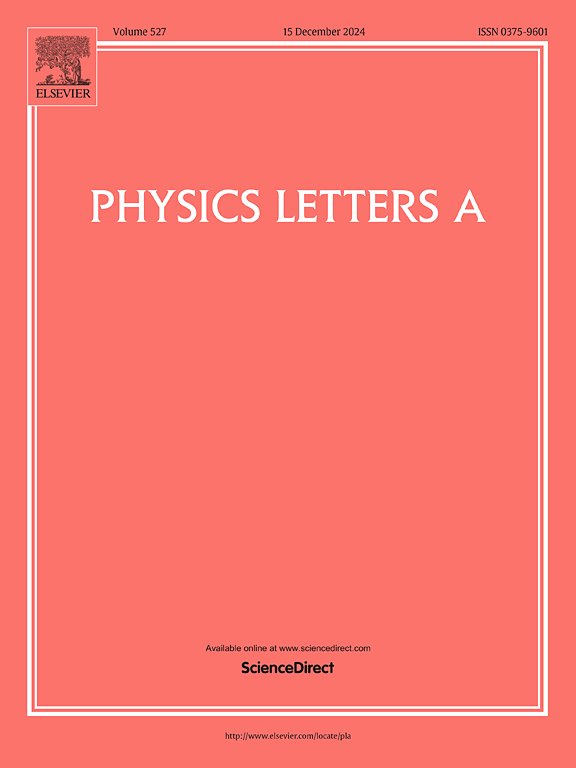控制开放量子系统:从马尔可夫动力学到非马尔可夫动力学过渡过程中的量子关联作为资源
IF 2.3
3区 物理与天体物理
Q2 PHYSICS, MULTIDISCIPLINARY
引用次数: 0
摘要
在现实的量子力学系统中,不可避免地会暴露在外部环境中。这种暴露通常会导致系统与周围环境交换信息的马尔可夫过程。相比之下,许多量子系统表现出非马尔可夫行为,显示出从环境返回系统的反向信息流。控制这样的开放系统对于各种应用至关重要,包括纠缠产生、耗散量子计算、设计量子存储器和量子计量。在一次全光实验的启发下,我们提出了一个双光子系统的理论模型。该模型能够控制系统与其环境之间的信息流,通过对开放系统进行测量,为评估非马尔可夫性提供了一个框架。此外,我们研究了相关的度量,即形成的纠缠和量子不和谐,以量化在所提出的模型中描述的二部系统中存在的量子相关性。我们的研究结果说明了量子相关性在从马尔可夫状态到非马尔可夫状态的转变过程中是如何演变的。他们强调了它们作为实现开放量子系统最优控制的宝贵资源的潜力。本文章由计算机程序翻译,如有差异,请以英文原文为准。
Controlling open quantum systems: Quantum correlations as resources during the transition from Markovian to non-Markovian dynamics
In realistic quantum-mechanical systems, there will inevitably be exposure to an external environment. This exposure typically leads to Markovian processes in which the system exchanges information with its surroundings. In contrast, many quantum systems exhibit non-Markovian behavior, displaying a reverse flow of information from the environment back to the system. Controlling such open systems is crucial for various applications, including entanglement generation, dissipative quantum computation, designing quantum memories, and quantum metrology. We propose a theoretical model for a two-photon system, inspired by an all-optical experiment. This model enables control over the flow of information between the system and its environment, providing a framework for assessing non-Markovianity through measurements taken on the open system. Additionally, we investigate the measures of correlations, namely entanglement of formation and quantum discord, to quantify the quantum correlations present within the bipartite system described in the proposed model. Our findings illustrate how quantum correlations evolve during the transition from the Markovian regime to the non-Markovian regime. They highlight their potential as a valuable resource for achieving optimal control of open quantum systems.
求助全文
通过发布文献求助,成功后即可免费获取论文全文。
去求助
来源期刊

Physics Letters A
物理-物理:综合
CiteScore
5.10
自引率
3.80%
发文量
493
审稿时长
30 days
期刊介绍:
Physics Letters A offers an exciting publication outlet for novel and frontier physics. It encourages the submission of new research on: condensed matter physics, theoretical physics, nonlinear science, statistical physics, mathematical and computational physics, general and cross-disciplinary physics (including foundations), atomic, molecular and cluster physics, plasma and fluid physics, optical physics, biological physics and nanoscience. No articles on High Energy and Nuclear Physics are published in Physics Letters A. The journal''s high standard and wide dissemination ensures a broad readership amongst the physics community. Rapid publication times and flexible length restrictions give Physics Letters A the edge over other journals in the field.
 求助内容:
求助内容: 应助结果提醒方式:
应助结果提醒方式:


